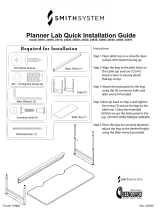
Disassembly Procedures To avoid risk of electrical shock, personal injury or
death; disconnect power to unit before following any
disassembly procedures.
WARNING
!
14 16022323 Rev. 0 ©2003 Maytag Appliances Company
Replacing the Evaporator:
1. Disconnect power,
2. Remove the screws securing the evaporator plate.
3. Remove the machine compartment and rear panel at
the rear of the unit.
4. Remove the putty from the opening in the rear of the
liner.
5. Remove the three screws that secure the baseplate
to the cabinet on the bottom of the unit.
6. Gently slide the mechanical out the rear of the unit
just enough to gain access to the assembly.
7. Install the access valve and recover refrigerant. After
recovering, be sure to cap off the access valve to
prevent contamination of the system.
8. Remove the cap from the rear of the compressor.
9. Disconnect the PTC starter relay at the compressor
by pulling off. You will not need to disconnect the
three wires.
10.Un-braze and remove the capillary tube from the drier
assembly.
11.Un-braze and remove the drier assembly at the
condenser.
12.Un-braze and remove the suction line at the
compressor.
13.Un-braze the discharge line at the compressor.
14.Remove the compressor by removing the two lock-
nuts on the mounting plate of the compressor. Lift the
compressor off of the carriage bolts.
15.Install the four rubber grommets in the bottom of the
new compressor and install the two sleeves where
the carriage bolts will be located. Mount the new
compressor and install the two washers and lock-
nuts and tighten to 45 in-lb.
Note: Do not remove the rubber plugs at the tube stubs
on the compressor at this time.
16.Remove the insulation tube on the evaporator tubing
harness.
17.Remove the evaporator from the front of the unit. The
evaporator will need to be tilted 90 degrees down and
the tubing harness with the accumulator will fit
through the opening in the liner.
Installation:
Reverse the removal instructions for installation. Remove
the plugs from the compressor right before brazing.
Make certain that the suction line and tubing harness
insulation tube are installed and sealed. Also, check the
thermistor to make sure it has full contact and is secure.
Be sure to check for leaks and evacuate to 50 microns.
Compressor Removal:
1. Disconnect power.
2. Remove the machine compartment and rear panel at
the rear of the unit.
3. Remove the three screws that secure the baseplate
to the cabinet on the bottom of the unit.
4. Gently slide the mechanical out the rear of the unit
just enough to gain access to the compressor
assembly.
5. Install sealed system access valve(s) and recover
refrigerant. After recovering, be sure to cap off the
access valve to prevent contamination of the system.
6. Remove the cap from the rear of the compressor.
7. Disconnect the PTC starter relay at the compressor
by pulling off. You will need to disconnect the three
wires from the old PTC starter and then connect the
new one.
8. Un-braze and remove the capillary tube from the drier
assembly.
9. Un-braze discharge tube from compressor at the
compressor.
10.Un-braze and remove the drier assembly from
condenser out tube.
11.Un-braze and remove the suction line at the
compressor.
12.Remove the compressor by removing the two lock-
nuts on the mounting plate of the compressor. Lift the
compressor off of the carriage bolts.
Compressor Installation:
1. Install the four rubber grommets in the bottom of the
new compressor and install the two sleeves where
the carriage bolts will be located. Mount the new
compressor and install the two washers and lock-
nuts and tighten to 45 in-lb.
Note: Do not remove the rubber plugs at the tube
stubs on the compressor at this time.
2. Install and braze the new drier assembly to the
condenser. Then install and braze the capillary tube
and the discharge out.
3. Remove the plug for the discharge line at the
compressor. Install and braze the discharge line to
the compressor.
4. Remove the plug for the process tube on the
compressor. Install and braze in the process tube. Be
sure to cap off the end to prevent any contamination.
5. Remove the plug for the suction line on the
compressor. Install and braze in the suction line from
the evaporator. Be sure to also reinstall the suction
line and tubing harness insulation tubes.
6. Reinstall PTC starter and wire according to wire
diagram.
7. Reinstall compressor cap.




















